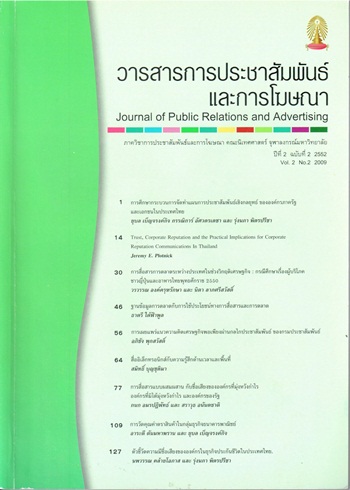การศึกษากระบวนการจัดทำแผนการประชาสัมพันธ์เชิงกลยุทธ์ขององค์กรภาครัฐและเอกชนในประเทศไทย
Main Article Content
Abstract
In terms of public relations strategic planning, research findings show that most organizations annually prepare for their public relations plans and those usually support organization’s vision and strategic plans. Most organizations share similar ways of running strategic planning. Differences are found due to variety in organization structure and system. Business agencies seem to cope and adjust better with ever changing environment. In state agencies, public relations strategic planning is mostly geared to serve organization’s mission such as public campaign rather than to promote organization’s image while business agencies use it to promote both their images and marketing purposes.
Evaluation of the PR strategic plan is perceived to be very important process among business organizations. State agencies do not regularly evaluate their strategic plans due to inadequacy of staff. They sometimes outsource evaluation job but that will be only when budget is available.
Problems and difficulties of PR work come in the form of top management negligence of PR’s importance that leads to lower budgeting arrangement. Most PR plans do not yield short-termed or concrete results therefore management support in terms of staff and budgeting is usually low. PR practitioners in business agencies experience less difficulties in trying to follow their strategic plans. Their state agency counterparts have to struggle to overcome top management’s awareness of PR’s role and importance. Moreover, bureaucratic system greatly obstructs efficiency and flexibility that PR works need. Government organizations in general cannot successfully communicate with their target audience. They, consequently gain less support from their target groups and stakeholders.


